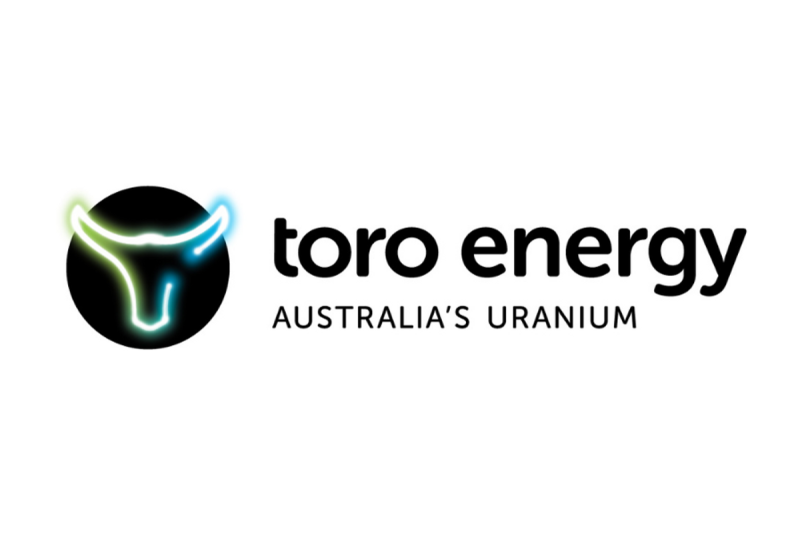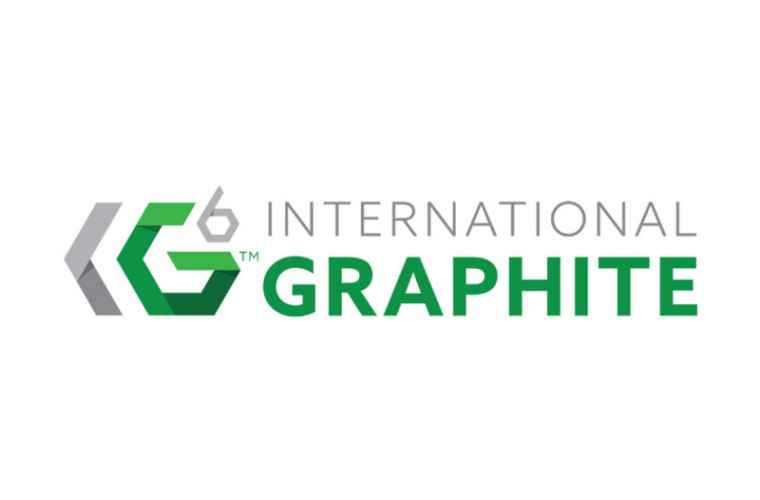

Overview
Countries worldwide are working towards decarbonization and paying more attention to clean energy sources. About 10 percent of the world’s electricity is produced from 440 power reactors, and more countries like Japan, Germany, the UK and the US are revitalizing their nuclear energy capacities to reduce fossil fuel production while improving energy security.
Australia produces 12 percent of the world’s uranium, behind Canada (13 percent) and Kazakhstan (43 percent). It is also home to the Wiluna uranium project, a well-established uranium resource, which is also the flagship asset of Toro Energy (ASX:TOE), a uranium exploration and development mining company that actively seeks to uncover value from other commodities in its existing highly prospective project ground.
Toro holds JORC-compliant uranium resources of 90.9 million pounds (Mlbs) uranium oxide (U3O8), at a 200 parts per million (ppm) U3O8 cut-off, across its Western Australia uranium projects, of which 84 Mlbs are proximally located within the northern goldfields region.
The 100-percent-owned Wiluna uranium project includes four key deposits – Lake Maitland, Centipede, Millipede and Lake Way – and offers significant uranium exposure of 52 million tons (Mt) @ 548 ppm for 62.7 Mlbs U3O8, at 200 ppm cut-off (JORC 2012). It is located only 30 kilometers southwest of Wiluna in Central Western Australia.
The Wiluna uranium project has received state and federal approval (subject to required amendments) and has been granted mining leases.
Considerable research over recent years has identified processing redesign opportunities from unique geological attributes within the uranium deposits, but particularly at Lake Maitland, as well as the ability to extract the inherent vanadium held within the uranium ‘ore’ for a vanadium by-product. Within the uranium mineralization envelope, the Wiluna project is estimated to contain 68.3 Mlbs of vanadium oxide (V2O5), inferred at 200 ppm V2O5 cut-off (JORC 2012).
The unique geology of the Lake Maitland deposit and the processing redesign have allowed for a mining and processing option exclusively for Lake Maitland, that could be economic on its own or be the economic spearhead of a longer-term, larger Wiluna mining operation (dependent on market conditions and approvals). The stand-alone Lake Maitland option, aided by the economic efficiency of the new processing design, results in a transformational potential increase in production from the Lake Maitland deposit.
The scoping study for the stand-alone Lake Maitland uranium-vanadium operation option shows potential for exceptional financial returns with a pre-tax NPV of AU$610 million, a short payback period of 2.5 years, 41 percent internal rate of return, and low capital operating cost estimates (assuming an AU$/US$ exchange rate of 0.7 and US$70/lb U3O8 price and US$5.67/lb V2O5 price) after producing 22.8 Mlbs of U3O8 and 11.9 Mlbs of V2O5.
The Lake Maitland pit optimisation successfully increased potential production by 8Mlbs U3O8 and 11.9Mlbs V2O5 based on these assumptions.
The design phase of Toro Energy’s beneficiation and hydrometallurgical pilot plant is on track and in line with plans to begin operations in the second half of 2024. The pilot plant will test the improved beneficiation and hydrometallurgical circuit developed by Toro from bench scale research at a closer-to-production scale and as single streams. It will also test potential ore from the three uranium-vanadium deposits that Toro believes will make up an extended Lake Maitland operation – these include Lake Maitland, Lake Way and Centipede-Millipede.
The company will commence a large sonic core drill program to provide bulk, but targeted potential ore, for the upcoming pilot plant program.
Toro Energy has also recently initiated a refresh and update of its Lake Maitland scoping study using the latest, more favourable commodity pricing and exchange rate guidance.
The Lake Maitland deposit is part of a joint venture partnership with two reputable Japanese corporations, Japan Australia Uranium Resource Development. (JAURD) and Itochu.
Toro has been actively evaluating the prospectivity of its Wiluna asset portfolio for minerals other than uranium, including nickel and gold.
Toro’s Dusty nickel project is located on the northern, eastern and southern shores of Lake Maitland and the Lake Maitland uranium deposit and is focused on two main target areas: Dusty and Yandal One. These properties will be the subject of a proposed demerger, following Toro’s recent strategic review of its non-core assets and future plans to solely focus on its uranium development opportunities and its flagship Wiluna project.
Toro Energy’s management team and board of directors have extensive experience in the mining industry, with combined expertise that includes working at major mining houses, exploration companies, uranium mining operations, corporate financing and government and community relations.
Company Highlights
Toro Energy is a well-established Western Australian uranium exploration and development company that actively seeks to uncover value from other commodities in existing highly prospective ground.Toro holds JORC-compliant uranium resources of 90.9 Mlbs U3O8 across its Western Australia uranium projects, of which 84 Mlbs is proximally located within the northern goldfields.Toro’s 100-percent-owned flagship Wiluna uranium project, located 30 kilometers southwest of Wiluna in Central Western Australia, contains 62.7 Mlbs of U3O8 at an average grade of 548 ppm over four deposits: Lake Maitland, Centipede, Millipede and Lake Way.The company has defined a significant maiden inferred vanadium resource of 68.3 Mlbs of V2O5 inside the uranium mineralisation envelope.Scoping Study completed for a stand-alone Lake Maitland Uranium-Vanadium operation shows potential for exceptional financial returns.In addition to its flagship uranium project, Toro’s strategic evaluation of the Lake Maitland tenure has resulted in the discovery of massive nickel sulphide and vein-hosted gold, which include the Dusty Nickel Project and the Yandal Gold Project.Following a recent strategic review, Toro is considering to solely focus on its uranium development opportunities and demerge its portfolio of non-core projects, including the nickel, gold and base metal assets in Western Australia.The company is led by a management team and board of directors with direct experience in the uranium exploration and mining as well as base metal exploration industry.
Key Projects
Wiluna Uranium Project
Toro Energy’s flagship asset is located only 30 kilometers from the town of Wiluna in the northern goldfields region within central Western Australia. The Wiluna project contains 62.7 Mlbs of U3O8 (at a 200 ppm U3O8 cut-off) over four deposits: Centipede, Millipede, Lake Way and Lake Maitland. The asset has been de-risked and optimized to improve yield and has successfully incorporated the processing of a vanadium resource as a by-product. A scoping study was completed for a stand-alone Lake Maitland uranium-vanadium operation.
Project Highlights:
De-risked Uranium Project: Toro Energy has de-risked the Wiluna uranium asset by:Obtaining state and federal environmental approvals. Retrospective amendment to substantial commencement date condition will be required as well as amendment to mining proposal required as a result of further studies which significantly enhanced the project (refer below)Securing mining leasesIdentifying a simple yet effective mining processDrilling out the uranium resources so that the project’s JORC 2012-compliant 52 Mt at 548 ppm for 62.7 Mlbs of U3O8 (at a 200 ppm U3O8 cut-off) have a 96.3 percent measured and indicated status (JORC 2012)Extensive laboratory testing of a new and efficient beneficiation and processing technique inclusive of the extraction of vanadium for a valuable by-product.Uranium Exploration assets: Toro also owns 100 percent of three other exploration projects in Western Australia that have a total uranium resource of 28.2 Mlbs at Nowthanna, Dawson Hinkler and Theseus.Lake Maitland Pit Expansion: A 2022 pit expansion campaign, based on the new beneficiation and processing flow sheet and a stand-alone Lake Maitland mining operation, increased the potential of uranium ore and the asset by US$608 million in potential gross product value. Scoping study at proposed Lake Maitland Uranium-Vanadium Operation: Conducted by mining engineers at SRK Consulting Australasia, and metallurgical and processing engineers at Strategic Metallurgy, the scoping study results highlight the project’s potential for robust financial returns (assumes a US$70/lb U3O8, US$5.67/lb V2O5 price and a US$: AU$0.70 exchange rate). Scoping Study Financial Metrics Refresh: A refresh of the scoping study is underway to incorporate current financial metrics and improved uranium pricing.Further Expansion of Scoping Study: to incorporate amenable ore from Toro’s Lake Way and Centipede-Millipede uranium deposits into the proposed processing operation at Lake Maitland. The Lake Maitland deposit will be re-estimated to better define the resource at the new cut-off grade before restating the resource and re-calculating the total Wiluna Project resources at the new cut-off grades of 100ppm.Pilot Plant Design Commissioned: A detailed pilot plant design is being undertaken to further assess the new processing flowsheet for Lake Maitland at a closer to ‘operational’ scale. The pilot plant design is on track incorporating all aspects of both uranium and vanadium production. A sonic core drilling program will commence to deliver potential ore to the pilot plant currently in design for Wiluna.Robust Local Infrastructure: The assets are within an established mining center, which means much of the required infrastructure is readily available. The project has access to power and water, which reduces initial development costs.
The Dusty Nickel Project – Discoveries of Massive Nickel Sulphide
Toro’s Lake Maitland tenure is located in the Yandal Greenstone Belt within the Yilgarn Craton of Western Australia, a gold district within a world-class gold and nickel province. With little exploration for non-uranium minerals ever conducted on the properties, Toro considers the project area highly prospective for nickel, gold and base metals.
In 2020, Toro made a blind discovery of massive and semi-massive nickel sulphides associated with the base of a 7.5-kilometer unbroken length of previously unknown komatiite (Dusty komatiite) – arguably the first massive nickel sulphides discovered in the Yandal Greenstone Belt, which is located 50 kilometers east of the world-class Mt. Keith nickel deposit. The Dusty nickel project is located near the Lake Maitland uranium deposit and contains two key target areas: Dusty and Yandal One.
Continued exploration and diamond drilling on the project has resulted in four discoveries of massive/semi-massive nickel sulphide zones to date with only 4.5 kilometers tested so far at a single depth along a 7.5-kilometer komatiite magnetic trend. Only limited testing for massive nickel sulphides has been undertaken to date of an approximately 15-kilometer strike length of known komatite – ultramafic target rock. With such limited drilling on the Lake Maitland tenure, it is yet to be known whether other similar magnetic anomalies are also komatiite-ultramafic rock and how much more rock is prospective for massive nickel sulphides on Toro’s 100-percent-owned Dusty nickel project.
Project Highlights:
Four zones of massive nickel sulphide discovered: Toro has discovered four zones of massive and semi-massive nickel sulphides: Dusty, Houli Dooley, Jumping Jack and Dimma. Significant diamond drill results from these discoveries to date include:DUSTY9 meters at 2.07 percent nickel from 250.9 meters downhole (TED07) including:2.0 meter at 4.01 percent nickel from 250.9 meters downhole; and2.0 meters at 3.85 percent nickel from 255.5 meters downhole.2.6 meters at 3.45 percent nickel from 184.5 meters downhole (TED04).7.2 meters at 1.05 percent nickel and 0.26 percent copper from 252 meters downhole (TED22).HOULI DOOLEY3.05 meters at 1.59 percent nickel from 297.75 meters downhole (TED14).JUMPING JACK3.45 meters at 1.42 percent nickel from 240.2 meters downhole (TED37).2.44 meters at 1.16 percent nickel from 231.6 meters downhole (TED38).DIMMA4.31 meters at 1.16 percent Ni from 243.3 meters downhole (TED41).3.13 meters at 1.42 percent Ni from 314 meters downhole (TED42).4.6 meters at 1.61 percent Ni from 194.2 meters downhole, including 3m at 1.09 percent Ni from 166 meters downhole (TED54).2.1 meters at 1.83 percent Ni from 147.1 meters downhole (TED55).Yandal OneTarget Area: The Yandal One Target Area is located some 17 kilometers south of the Dusty discoveries and with limited drilling, Toro has proven the existence of another komatiite with the potential to host massive nickel sulphide.
Toro Yandal Gold Project
The Lake Maitland tenure is located only 20 kilometers northeast of the world-class Bronzewing and Mt McClure gold mines within the same Greenstone Belt, the Yandal, within one of the most famous gold provinces in the world, the Yilgarn Craton.
Early exploration by Toro at the Golden Ways target area in the north of the project has uncovered surface rock chip samples of up to 70 g/t gold and significant drilling results, including:
5 meters at 4.4 g/t from 22 meters (TERC24)Including 2 meters at 9.93 g/t from 22 meters4 meters at 3.3 g/t from 28 meters (TERC25)Including 1 meter at 10.9 g/t from 28 meters2 meters at 3.79 g/t from 10 meters (TERC38)Including 1 meters at 7.33 g/t from 10 meters3 meters at 1.41 g/t from 9 meters (TERC36)Including 1 meters at 2.76 g/t from 10 meters
Management Team
Richard Homsany – Executive Chairman
Richard Homsany has extensive experience in the resources industry, having been the executive vice-president for Australia of TSX-listed Mega Uranium since April 2010. He has worked for North Ltd, an ASX top 50-listed internationally diversified resources company in operations, risk management and corporate, before its takeover by Rio Tinto.
Homsany is an experienced corporate lawyer and certified practicing accountant (CPA) advising numerous clients in the energy and resources sector, including publicly listed companies. He was corporate partner at international law firm DLA Phillips Fox (now DLA Piper), where he advised clients on a range of transactions and matters including capital raising, IPOs, stock exchange listing, mergers and acquisitions, finance, joint ventures, divestments and governance.
He is a fellow of the Financial Services Institute of Australasia (FINSIA) and a member of the Australian Institute of Company Directors. He has a commerce degree and honors degree in law from the University of Western Australia, and a graduate diploma in finance and investment from FINSIA (State Dux).
Homsany has significant board experience with publicly listed companies in Australia and Canada. He is the chairman of ASX-listed copper explorer Redstone Resources. and TSXV-listed iron ore and gold explorer Central Iron Ore Limited. Homsany is currently the chairman of the Health Insurance Fund of Australia Limited.
Michel Marier – Non-executive Director
Michel Marier joined Sentient in 2009 as an investment manager. Before joining Sentient, Marier worked eight years in the private equity division of la Caisse de dépôt et placement du Québec. Marier holds a master’s degree in finance from HEC Montreal and is a CFA charter holder.
Richard Patricio – Non-executive Director
Richard Patricio is the CEO and president of Mega Uranium, a uranium-focused investment and development company with assets in Canada and Australia.
In addition to his legal and corporate experience, Patricio has built a number of mining companies with global operations. He holds senior officer and director positions in several junior mining companies listed on the TSX, TSX Venture, AIM and NASDAQ exchanges. He is currently also a director of NexGen Energy (TSE:NXE, Mkt Cap. C$2.7 billion). He previously practiced law at a top-tier law firm in Toronto and worked as an in-house general counsel for a senior TSX-listed company. He received his law degree from Osgoode Hall and was called to the Ontario bar in 2000.
Katherine Garvey – Legal Counsel and Company Secretary
Katherine Garvey is a corporate lawyer who has significant experience in the resources sector. Garvey advises public (both listed and unlisted) and proprietary companies on a variety of corporate and commercial matters including capital raising, finance, acquisitions and disposals, Corporations Act and ASX Listing Rule compliance, corporate governance and company secretarial issues. She has extensive experience drafting and negotiating various corporate and commercial agreements including farm-in agreements, joint ventures, shareholders’ agreements, and business and share sale and purchase agreements.
Garvey is a senior associate at Cardinals Lawyers and Consultants, a corporate and resources law firm in West Perth, and company secretary of the Health Insurance Fund of Australia Limited. Garvey is also legal counsel (Australia) to TSX-listed Mega Uranium, and company secretary to TSXV-listed Central Iron Ore.
Dr. Greg Shirtliff – Geology Manager
Dr. Greg Shirtliff has over 20 years of experience in industry-related geology and geochemistry, including a PhD in mine-related geology and geochemistry from the Australian National University. Since his studies, Dr Shirtliff has spent over 17 years in various roles in the mining and exploration industry ranging from environmental, mine geology, resource development, exploration and management roles in exploration and technical projects inclusive of engineering and metallurgical. His roles have included a number of years at ERA-Rio Tinto’s Ranger Uranium Mine, as the senior geoscientist for Cameco Australasia and more recently as the lead geologist and technical manager for Toro Energy, where he is the exploration and technical lead responsible for increasing the viability of the company’s uranium and mineral resources, developing and directing the company’s uranium and non-uranium exploration strategy, aiding the company technically through EPA approval for a uranium mine, and guiding the engineering and metallurgical through to scoping level economic assessment.
Dr Shirtliff has had recent exploration success at Toro Energy, discovering multiple zones of massive nickel sulphide mineralization along the Dusty Komatiite, arguably the first massive nickel sulphide mineralization discovered in the Yandal Greenstone Belt in Western Australia.
Dr Shirtliff holds directorships on privately owned consultancy and prospecting companies and is a long-standing member of the Australian Institute of Mining and Metallurgy and the internationally recognized Society of Economic Geologists.
Marc Boudames – Financial Controller
Marc Boudames is experienced in statutory financial reporting, taxation, ERP systems, business analytics, corporate transactions, due diligence, mergers & acquisitions, finance, joint ventures and divestments. He previously worked at RSM Bird Cameron, as general manager –finance & administration for ASX-listed Redport Ltd and Mega Uranium (Australia), a Canadian TSX-listed mining and equity investment company focused on global uranium properties and multi-mineral exploration. He has worked for multiple companies across various industries, including listed and public companies associated with the mining and oil and gas sectors, such as WesTrac, CB&I and Spotless Group.




